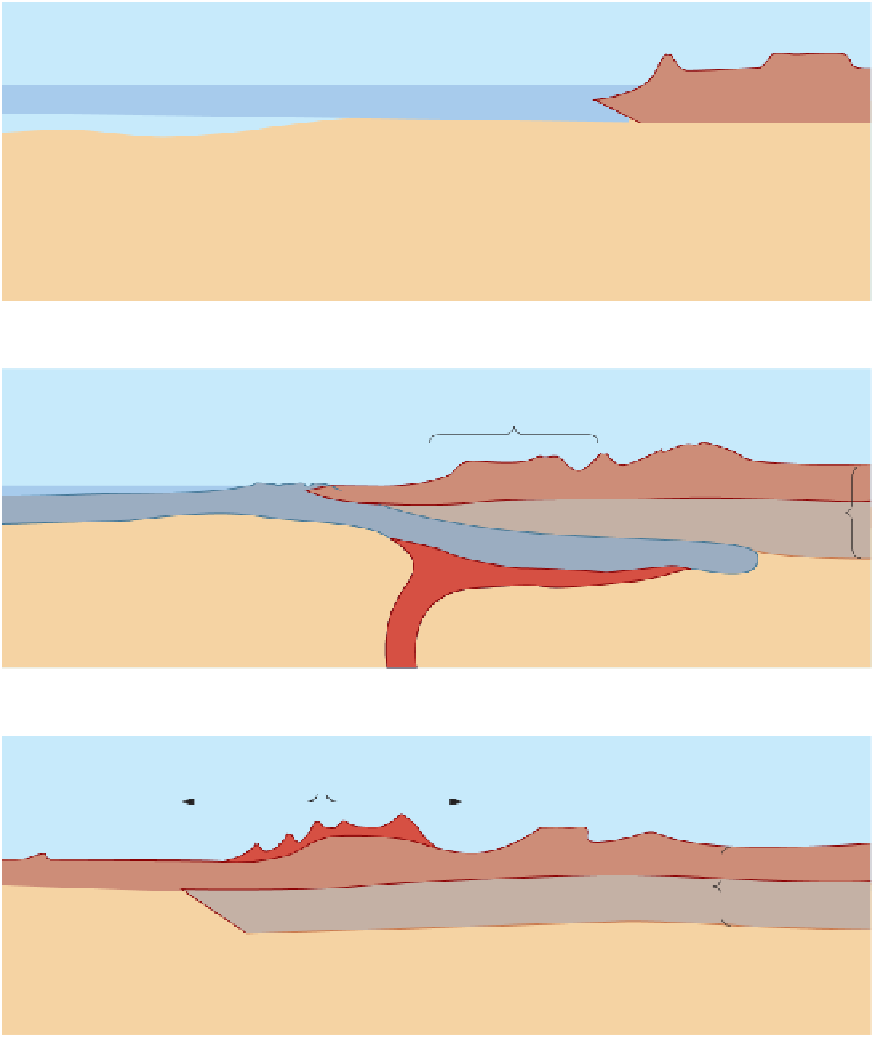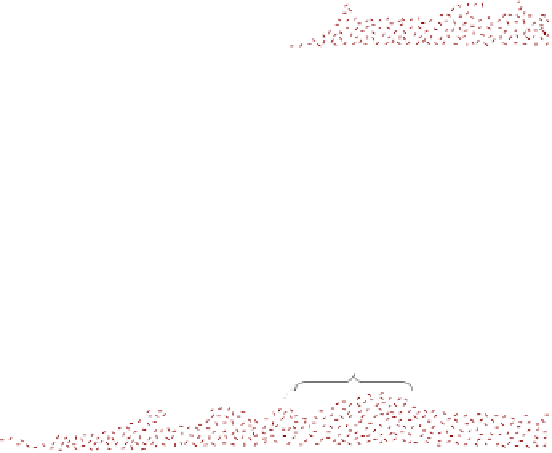Geology Reference
In-Depth Information
◗
Figure 23.5
Laramide Orogeny The Late Cretaceous to Eocene Laramide orogeny took place
as the Farallon plate was subducted beneath North America.
Magmatism migrates inland
Seamounts
Continental
lithosphere
Plume
Farallon plate
70-65 million years ago
As North America moved westward over the Farallon plate, beneath which was the defl ected head
of a mantle plume, the angle of subduction decreased and the igneous activity shifted inland.
a
Laramide
deformation
Amagmatic zone
Coastal range
accreted terranes
Continental
lithosphere
Plume beneath
subducted Farallon
plate deflected by drag
of overriding plate
Farallon plate
Plume
Subhorizontal
subduction
55-45 million years ago
With nearly horizontal subduction, igneous activity ceased and the continental crust was deformed,
mostly by vertical uplift.
b
Uplift, extension
Volcanism
Continental
lithosphere
Plume
Farallon plate
New subduction zone
Foundering of Farallon plate
45-35 million years ago
Disruption of the oceanic plate by the mantle plume marked the onset of renewed igneous activity.
c
According to one hypothesis, a buoyant oceanic pla-
teau that was part of the Farallon plate was carried beneath
the continent and resulted in shallow subduction. Another
hypothesis holds that North America overrode the Faral-
lon plate beneath which was the defl ected head of a mantle
plume (
buckling and fracturing, which yielded fault-bounded vertical
uplifts. Erosion of the uplifted blocks yielded mountainous
topography and erosion of the mountains supplied sediments
to the intervening basins, and it also accounted for huge over-
thrust faults, especially in the Northern Rocky Mountains (see
Chapter 10 Geo-inSight on pages 262 and 263). By Middle
Eocene time, Laramide deformation ceased and volcanism
resumed when the mantle plume beneath the lithosphere
disrupted the overlying oceanic plate (Figure 23.5c). By the
Neogene, the mountains had been deeply eroded and the ba-
sins fi lled with sediment; however, renewed uplift and erosion
during the Late Neogene accounts for the present ranges.
Figure 23.5a). The lithosphere above the plume
was buoyed up, accounting for shallow subduction. As a re-
sult, igneous activity shifted farther inland and fi nally ceased
because the descending plate no longer penetrated to the
mantle (Figure 23.5b).
The changing angle of subduction also resulted in a
change in the style of deformation that involved large-scale
◗




















Search WWH ::

Custom Search